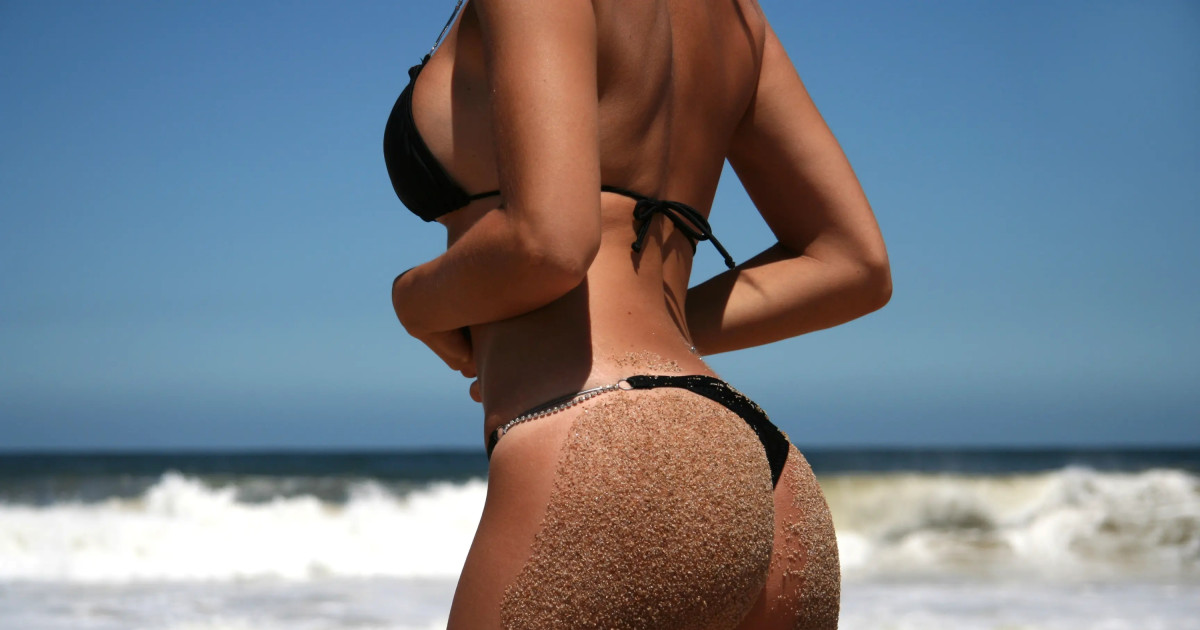You’ll want to spend a day at the beach even more when you know there are fun ways to fight cellulite too, and have fun. While you won’t be able to get an anti-cellulite treatment while on vacation, you’ll be trying to lighten the pits and indentations that are characteristic of cellulite skin.
The hot and cold contrast is amazing
Don’t feel guilty about relaxing in the sun, as the contrast between the heat built up on your skin and the icy cold water activates circulation and flushes out toxins from beneath the skin’s hollows. You will get the acclaimed results in beauty spas and the latest generation of anti-cellulite for free!
become firm. In the heat of the sun, the blood vessels dilate, while in cold water, the blood vessels constrict. This improves blood circulation and tightens the skin.
think about it. Remember that excessive sun exposure can exacerbate muscle relaxation and worsen the appearance of cellulite in the areas most vulnerable to gravity (the buttocks and thighs). solution? Wear high-strength sunscreen, drink plenty of water, and seek shelter under an umbrella. Remember, it’s not a good idea to apply anti-cellulite medication before sunbathing, as it can lead to blotchy skin.
Sand is the best exfoliant
Take advantage of the beach sand to exfoliate your skin. Apply in vigorous motions, working from the bottom up on the thighs and thighs, and in circular motions on the belly and buttocks. If you think it is necessary, bring horsehair gloves to the beach.
Thalassotherapy. In addition to activating lymphatic drainage and blood microcirculation, the exfoliation of dead skin cells also improves the absorption of trace elements from sea water that oxygenate the skin and delay aging. If you notice less cellulite after a beach vacation, there are two reasons: a tan hides the typical cellulite indentations, and salt water baths help flush out toxins and trapped fluid through the skin. Anti-cellulite creams contain marine ingredients for a reason: algae, iodine, and more.
move against the orange peel
Exercise gradually reduces cellulite, especially in the affected areas: buttocks, legs and buttocks. Reveal smoother, toned, and firmer skin with these simple tips.
walk. If you’re persistent and spend at least 45 minutes walking barefoot by the sea, it can already mean an improvement in cellulite. Due to the resistance of the water and sand, you’ll burn 20% to 50% more calories than you would burn at the same rate on a flat surface.
keep burning. Playing with the waves, doing leg raises and lunges in the water – two sets of 20 reps for each body and exercise – and of course swimming and diving are also very effective. You’ll mobilize retained fat deposits under the skin, drain fluid buildup, and eliminate toxins—you’ll sweat, too—underwater.
For and against. Experts believe that the best exercise to combat cellulite is one that uses the legs — dancing, swimming, cycling, etc. You have to practice regularly, but not to the point of burnout. They recommend avoiding high-intensity exercises—running, jumping, crossfit, tennis, etc.—as they can damage the connective tissue in areas affected by cellulite skin and make the condition worse.
find inner peace
Did you know that stress and emotional instability can damage the collagen fibers responsible for firming the skin and make cellulite more visible? As if that wasn’t enough, living a very busy life without a space to take care of yourself creates hormones that favor storing more fat. fear!
Vitamin C. The tighter the skin, the less visible cellulite. Vitamin C is a collagen-boosting nutrient that also helps lower cortisol (stress hormone) levels. This summer, add tomatoes and peppers to salads, eat homemade gazpacho (be careful with salt, it absorbs water from the body and inflames affected tissues), prepare lemonade and mix kiwi, mango, papaya, lime, Melon to cart, watermelon and forest berries.
magnesium. Magnesium and B vitamins (specifically B1, B2, and B6) are all involved in collagen synthesis and improve stress management. They are rich in seeds, nuts, whole grains and legumes.

